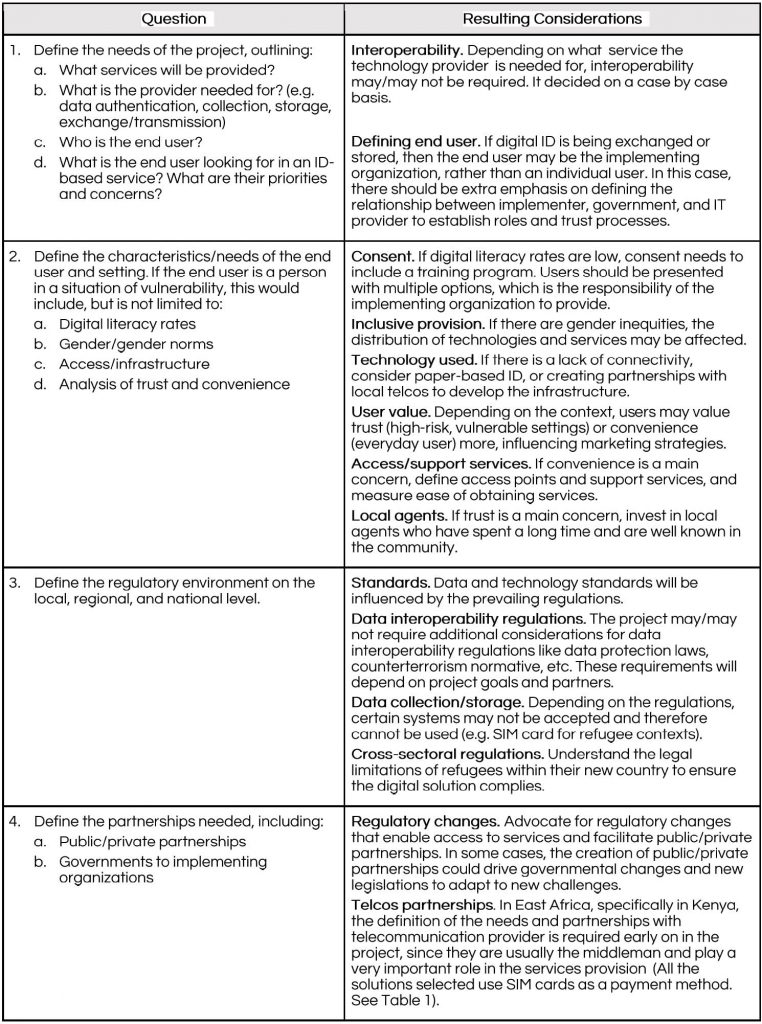This report is available for full download to PDF.
Executive Summary
With over 1 billion people worldwide lacking a form of legal identity, many individuals lack access to government and humanitarian services, financial, and mobile connectivity, particularly individuals in need of humanitarian assistance, such as refugees. Target 16.9 of the Sustainable Development Goals aims to address this need by providing institutionally-recognized identify for all by 2030. With the growing use of digital and mobile technologies worldwide, digital forms of legal identification could improve many populations’ access to ID and other digital services. However, implementing a large-scale digital service involves a variety of stakeholders, including the government, service providers, implementers, communities, and individuals. For a digital ID solution to succeed, all stakeholders must be aligned and engaged.
To understand the role of stakeholders and their interactions with one another in a digital ID implementation, four key relationships are evaluated:
- Government to implementing organization: An enabling regulatory environment is essential for digital ID solution to succeed. NGOs and multilaterals that aim to implement a digital ID service must work alongside local and national governments to ensure policies of data protection and financial inclusivity exist.
- Service providers to individuals: Designers of a digital ID solution must understand and incorporate their specific end user’s context, which includes understanding their literacy rates, current notion of identity, trust in local authority, desires for convenience, consent practices, and cultural preferences; among others.
- Service provider to service provider: Partnerships between service providers, particularly regarding the role of telecommunication companies, must include trust, data security, and plans for interoperability.
- Community to individual: End users desire a quality service that meets their needs, is convenient to use, and operated by locally-accessible agents.
Digital interventions must be disseminated in enabling environments that allow the services to operate efficiently and ethically. Trends that enable successful digital ID solutions include (1) trust, (2) standards and policy, and (3) ICT infrastructure; in addition to overarching global initiatives and collaborations. And although providing an enabling environment is essential for successful implementation of a digital ID system, a strong contextual analysis regarding a digital ID system’s user provision model is mandatory. We present a checklist to guide practitioners through the evaluation process required to design an appropriate user provision model, including integrating aspects of user value, local trust, convenience, standards, data security, and interoperability; among others.
Ultimately, the goal of implementers is to improve the lives of disadvantaged populations, who require access to services and local resources. With this in mind, a solution, whether it be digital or otherwise, must be robust, locally appropriate, and context-specific.
READ THE FULL 20-PAGE REPORT HERE.
Thinking Ahead: A Checklist for Implementing Digital IDs
Edited by: Mariela Machado, Grace Burleson, & Jen Ventrella
Additional contribution: Pauline Mweu, Giulio Coppi


No Comments.